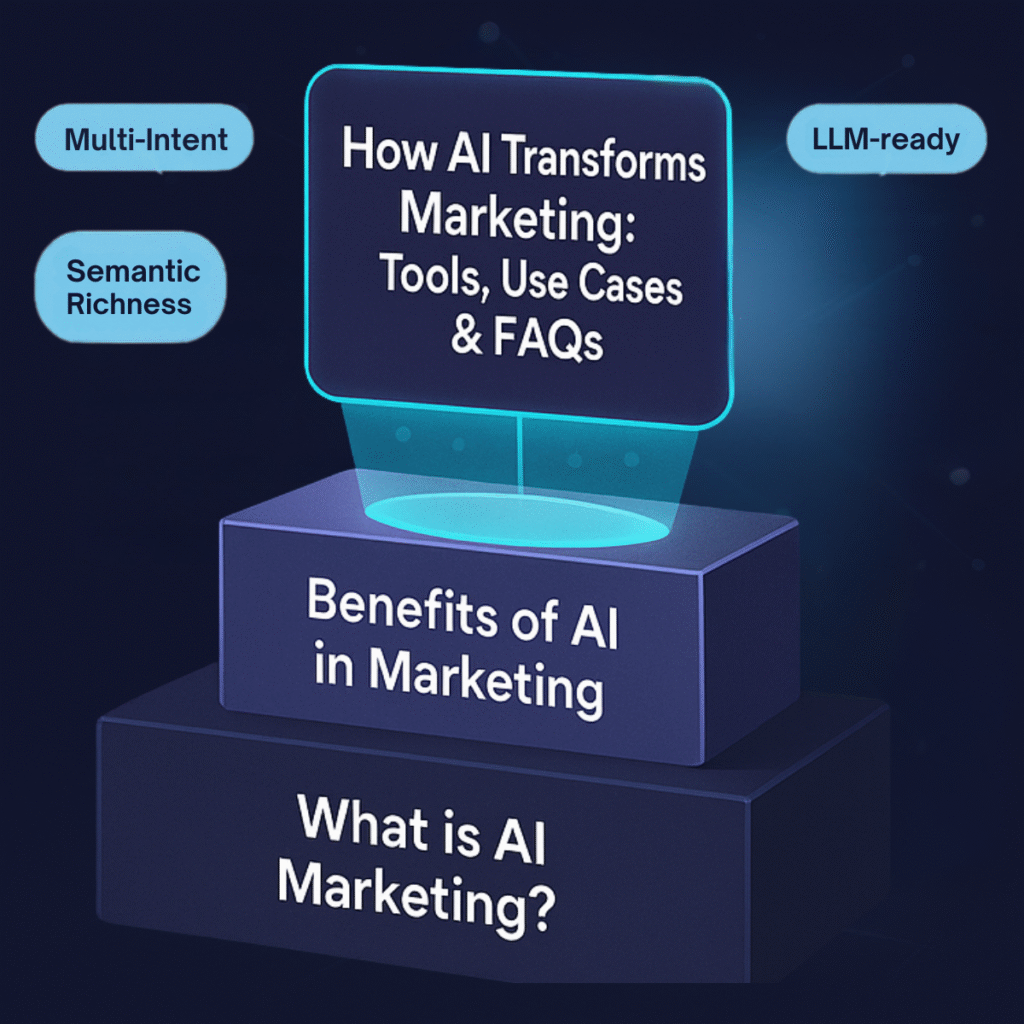In the last decade, SEO has been the cornerstone of content discovery. Keywords, backlinks, technical structure — all carefully tuned to appease the Google gods and climb the search rankings. But something fundamental is changing.
In 2025 and beyond, content is no longer just discovered through search engines — it’s increasingly surfaced by AI systems. Whether it’s ChatGPT answering a query, Perplexity generating a research summary, or an AI assistant recommending a resource mid-workflow, content is being found in new ways — and by new kinds of readers: large language models (LLMs).
If your content strategy is still built purely around old-school SEO, you’re only optimising for half the picture.
Why AI Discovery Is Changing the Rules
Search used to be about keywords. But LLMs don’t rely on keyword matches — they work through semantic understanding. That means AI doesn’t just look for the exact phrase someone types. It tries to understand their intent, then finds content that fits that intent — even if the words don’t match exactly.
This shift has major implications for content strategy. LLMs favour content that is clear, contextually rich, and written in a way that helps machines understand what it’s about — not just humans.
Add to that the rise of vector search, the phasing out of third-party cookies, and AI’s ability to work with anonymised behaviour data, and suddenly your content’s visibility depends more on how well it plays with AI than how many backlinks it has.
The New Discovery Layer: From Search Engine to Semantic Engine
We’ve entered the era of AI-first discovery — where your content is less likely to be found by a person typing a query into Google, and more likely to be quoted, summarised, or recommended by an AI tool.
This means your content is being evaluated differently. LLMs don’t just crawl and index. They interpret. They assess tone, context, depth, structure — and increasingly, trustworthiness. And unlike search engines, which present a list of options, LLMs often serve up just one answer. If your content doesn’t make the cut, you’re invisible.
So What Does AI-Optimised Content Look Like?
This isn’t about tricking algorithms. It’s about building content that AIs can understand, trust, and confidently surface.
That requires a shift in mindset:
-
From keyword repetition to semantic coverage
-
From clickbait titles to clear, contextual intent
-
From isolated blog posts to interconnected content ecosystems
5 Principles for Optimising Content for LLMs
1. Write with Clarity and Context
LLMs perform best when content is structured and unambiguous. That means using natural, human language — but with a strong editorial structure. Think clear subheadings, defined arguments, and predictable flow.
Content shouldn’t just inform — it should explain itself clearly enough for a machine to summarise it confidently.
2. Interlink Related Content Thoughtfully
One-off blog posts are harder for AI to interpret in isolation. Instead, group your content around key themes. Link articles together in a way that builds domain authority and semantic consistency.
You’re not just building a sitemap — you’re training the AI on what your brand knows.
3. Surface Your Expertise
AI systems are increasingly trained to prioritise trusted sources. That means showing your experience, referencing data, citing your sources, and writing from a position of authority.
Just as humans rely on credibility cues, so too do LLMs — especially those trained to reduce hallucination risk.
4. Include Summaries and FAQs
A well-written summary at the top or bottom of a post helps AI systems extract meaning quickly. Similarly, using natural question-and-answer sections (like FAQs) improves your content’s chances of being featured in LLM responses.
If a chatbot pulled one paragraph to answer a query — would it make sense out of context?
5. Test with AI, Not Just Search Consoles
If LLMs are becoming your new gatekeepers, test your content through them. Ask ChatGPT questions your audience might ask and see which answers get surfaced. If your content isn’t appearing — why?
Tools like Broden’s own diagnostic engine, Surfer, or even prompting GPT-4 directly can highlight where your content is falling short.
This Isn’t a Replacement for SEO — It’s Its Evolution
Think of AI optimisation as a second layer on top of your SEO strategy. Good headlines, solid structure, and accessible UX still matter. But to truly future-proof your content, you need to make it machine-intelligible, not just machine-readable.
It’s not just about ranking anymore. It’s about being the answer — the one result the model selects, cites, or includes in its summary.
Final Thought: Don’t Just Chase AI — Collaborate With It
This isn’t about trying to “hack” AI visibility. It’s about working with the way modern discovery systems think. And that means producing better content — deeper, clearer, more helpful content — that serves real human intent.
That’s the irony. The more AI reshapes content discovery, the more human your content needs to feel.
🧠 Unlock smarter marketing with AI-driven strategies



